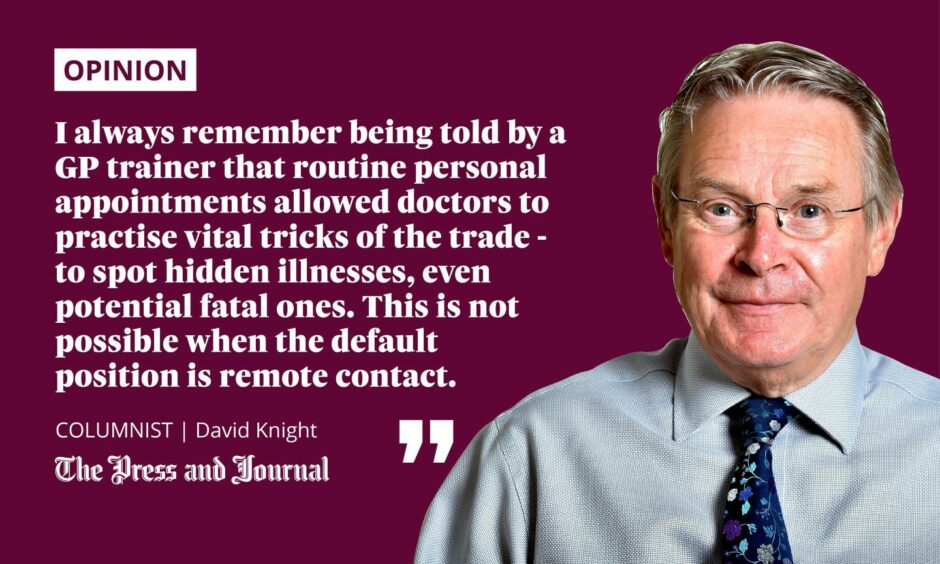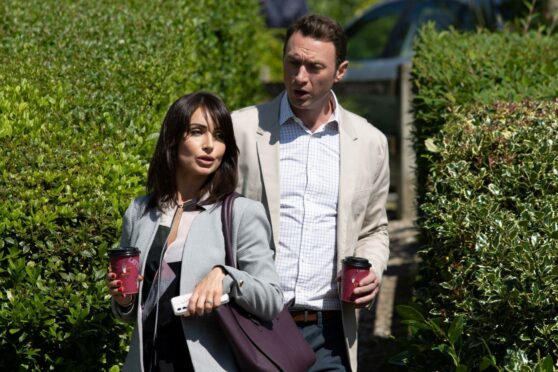I’m worried about the village doctor in Emmerdale – you know the one: Dr Liam Cavanagh, who went off the rails after the mysterious death of his beautiful young daughter.
He banned Leanna’s closest friends from the funeral service and even threw flowers back at them as her cortege passed by.
I know people watch the soap in Scotland as it hovers just outside the top 10 here, according to TV audience research.
What we also know, but he doesn’t, is that she was actually bumped off by the sister of one of his fellow GPs at the practice.
Heaven knows how he’ll react when he finds out.
Where are TV doctor’s patients?
Another thing I noticed was that he never seems to see any patients. I wonder why?
Is this due to Covid, after NHS doctors were ordered into tactical retreat to reduce personal patient contact, or scriptwriters not being bothered?
In the real world traditional patient-doctor interaction changed fundamentally overnight with Covid; the controversy still rages on after the loss of automatic face-to-face appointments with GPs.
In the film and TV world our fascination with doctors’ stories never wanes – from Dr Zhivago to Dr Finlay to Doc Martin.
Extraordinary doctor’s life story worthy of a Hollywood thriller
Next month is the anniversary of the death of an extraordinary Aberdeen-trained medic who gave his life in a pandemic.
Dr Christopher Davis’s real life story would be worthy of a Hollywood thriller.
The pandemic wasn’t Covid, but something even worse – smallpox.
There are familiar echoes from that which resonate in today’s pandemic.
Vaccinations were still in their infancy, but the difference was that they were often ineffective. We talk now of cajoling people to get jabbed, but fines were introduced in the 19th Century.
A modest display near the entrance at Aberdeen Royal Infirmary charts his short, but action-packed life.
At least I hope it’s still there, but people embroiled in their own life and death challenges possibly hurry by without giving it a second glance.

Dr Davis died at 28: an age when many young GPs are just qualifying after 10 years’ training.
Born in Barbados, he completed his studies in Aberdeen in late 1869 as the medical school’s first black student.
Tidal wave of smallpox deaths
The following summer he volunteered as a frontline medic saving casualties on both sides in the Franco-Prussian war. Some say it was his Florence Nightingale moment.
He also battled to stem a tidal wave of smallpox deaths among soldiers and civilians, but infection tore through the local populace and spread across the world.
There were 500,000 deaths in this short period alone which, given the comparative populations then and now, and similarities between Covid and smallpox, was truly shocking.
It was far more lethal than Covid with a much bigger onward infection rate – up to seven per person as opposed to two or three – and took centuries to conquer rather than a couple of years as now.
Smallpox also claimed Dr Davis’s life just a few months after he arrived.
He reminds us of the sacrifices among frontline medics in past conflicts and the reasons why the NHS brought the shutters down to protect GPs and patients as Covid swarmed over us.
A few months ago a north-east practice claimed I accused GPs of shirking during the Covid restrictions.
I never actually said that; I was highlighting deficiencies in new arm’s-length remote consultation, online and by phone, with which they were saddled.
I fear my mental processes were misdiagnosed.
Face-to-face GP appointments have dropped
But another esteemed title – The Spectator magazine in London – did accuse GPs recently of “hiding behind their telephones”.
The debate intensified with figures confirming that face-to-face appointments had dropped significantly.
Something like this was always going to happen as trouble was brewing long before Covid.
There were too many patients and not enough full-time GPs to cope with demand.
It does makes you wonder now if too much of GPs’ time then was wasted on unnecessary appointments which could have been handled by phone.
The Covid crisis facilitated a permanent metamorphosis. We appear to be lumbered with it.
But the irony is that this debate is all about a sudden overnight shift to remote consultation, but with little actual public consultation about the process.
The Covid crisis facilitated a permanent metamorphosis.
We appear to be lumbered with it.
I always remember being told by a GP trainer that routine personal appointments allowed doctors to practise vital tricks of the trade – to spot hidden illnesses, even potential fatal ones.
This is not possible when the default position is remote contact.
So can anyone tell me why face-to-face appointments are not so vital for GPs anymore when they were before Covid?
David Knight is the long-serving former deputy editor of The Press and Journal
